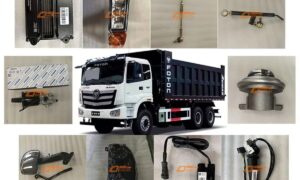Autonomous driving is here to stay, and it’s not long before the subject of using self-driving trucks to haul cargo will further hit the spotlight. But will every company involved in the logistics industry jump on the driverless truck bandwagon? Or better yet, can they?
How Autonomous Trucking Works
With self-driving trucks market being expected to rise in upcoming years, there are various companies rushing to put these trucks into production. The complexity behind them is why the process has taken decades to come to fruition. It is only for the last decade that we have seen consumer grade self-driving vehicles.
Autonomous trucks work in many ways like how automomous cars drive themselves. They combine various lidar , sensors, and video cameras that together with AI-based software control and maneuver a vehicle. Together with conventional satellite data mapping and even mor recently drone mapping create detailed driving information to guide vehicles safely.
With commercial trucks there are many more variables that need to be calculated in real time and based on what is being hauled. Commercial big rigs take many kinds of cargo and trailers, so these systems need to adapt to each situation, including acceleration and braking distances, the ability to make turns, and more. All these must be factored in by the software.
Who’s Making Autonomous Trucks Available to the Everyone Right Now?
As of early 2023, nobody. Not yet at least. Although deliveries began of the Tesla Semi, there has been no word on autonomous driving features. However, it is expected that just like other Teslas, they are equipped and ready pending an Enhanced Autopilot update. As of December, Reuters reported that the Vice President of the Pepsi brand which were the very first to receive these trucks, is only taking them on 100 mile trips. Just 20% of the expected range.
Companies like Aurora , Waymo (Google with Freightliner) , and Tusimple are hot on the heels of Tesla. Aurora is working on a pilot program in Texas with FedEx. They look like are next in line.
Is Every Segment of the Shipping Industry Going Autonomous?
There are various kinds of trucking that will have no problem going autonomous. But there are others that cannot at least fully. This is because of how these specific industries work.
For example, shipping a car all the way across the country on a full size car carrier requires up to 10 stops where the vehicles need to be loaded and unloaded. These vehicles can’t unload themselves, self-driving or not. This is just one of some complicated examples that even infrastructure cannot solve.
Another is less-than-truckload, or less-than-load (LTL) , which carry smaller shipments set for various destinations will likely be safe for a while, as these drivers typically will load and unload their own shipments because they are entrusted to deliver the right goods to the right people.
Also, LTL trucking companies may not always have cross-country shipments so procuring this infrastructure may not be necessary. The long-haul driver is safe in these industries for the foreseeable future.
Conversely, a company like Best Buy that is shipping from their warehouses to outfitted local stores can easily make use of a self-driving semi. Trained staff both loads and unloads the cargo.
Will Self Driving Semi Trucks Do Away with the Long-Haul Driver?
It is a common consensus the self-driving commercial truck will aim to make long-haul drivers obsolete. But it’s highly more likely that drivers for quite some time will become more like pilots. Planes can fly and even can land themselves, but pilots still are present to adjust as needed.
In the case of the long-haul driver, the “pilot” will be present to deliver or load cargo, sign off on items, keep a watchful drive on the road, etc. In the scope of the industries such as auto shipping this is likely the case. A huge win for the trucker who in many cases is an owner-operator that can implement this system themselves to travel constantly around the country making money, all while driving a lot less.
It’s safe to say then the role of the long-haul truck driver may change, however the need for them will not diminish any time soon.
Short Distance Trucking Will Probably Not See Demand
In the case of local deliveries and pick-ups where LTL thrives the most, it is very likely the investment in self-driving trucks will be absent. The costs of implementation will likely supersede the return for smaller shipping companies.
Big Nationwide LTL Trucking Companies Will Be First
It’s easy to forget that less-than-truck-load shipments are done nationally by companies like FedEx. In fact, as mentioned earlier FedEx is working on a pilot program with the new Peterbilt 579. But these are hub-to-hub. However, these companies are the first expected to use self-driving trucks at scale. But don’t expect to see your favorite driver stop showing up at your office. Local shipping still needs local drivers to enter homes, stores, and buildings.
How Close Are Self Driving Trucks to Being Part of Everyday Life?
By 2025 trucks should be fully autonomous however, a human driver will still likely be in the driver’s seat supervising. However, if traveling in a convoy the other trucks would be following in fully autonomous mode, according to The Fast Mode.
Sometime in the early 2030’s we should see totally autonomous driving whether it’s a convoy or not with these trucks. These should be delivering and loading at hubs easily. However, the infrastructure for fully automated pickups and deliveries in local stores and other locations will likely slow progress down.
It all boils down to economies of scale being the main bet here. The goal is increasing the volume of goods produced and delivered while reducing one of the largest hurdles which is time and cost of logistics. Self-driving trucks are faster and cheaper in the long run without the cost of manpower.



































